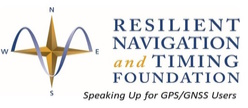A growing problem for GPS: The U.S. doesn’t have a backup system. Most of our critical infrastructure, including power grids, banks, transportation systems and telecom networks, relies on the Global Positioning System. Beyond mapping for transportation and other location services, GPS is used for highly precise timing necessary for high-speed financial trading, wireless network synchronization and power grid synchronization. But the rising risk of a major outage goes largely unnoticed. “I think GPS vulnerability doesn’t attract much attention because there have not been any major calamities yet, unlike with cybersecurity,” says Marc Weiss, a researcher at the National Institute of Standards and Technology.
A disruption in GPS would paralyze scores of business and other services, and with GPS use on the increase, a plausible work-around is becoming critical. A 2013 report from the Government Accountability Office pegged the cost of a GPS outage in the billions of dollars, and that might be a vast understatement. Google and Boston Consulting Group concluded in a 2012 report that the value of geospatial services, only a portion of GPS’s total value, added up to $1.6 trillion in just the U.S. Experts point out that the potential for civil unrest would rise, too, as a variety of systems, from ATMs to cellular networks, go down. Intentional wireless jamming, solar flares, satellite malfunctions and foreign threats are among the rising threats to GPS.
When I ask Dana A. Goward, president of the Resilient Navigation and Timing Foundation, about quantifying the value of GPS services, his response is blunt: “What’s the value of oxygen? GPS is oxygen. If it goes away, really, really bad things happen.” Goward, a former Coast Guard captain, spent years working in the federal government on the need for GPS backup before he retired in 2013. Now the head of the RNTF, a nonprofit that promotes the need for resilient navigation systems, Goward points out that GPS has become a ubiquitous and invisible utility.

